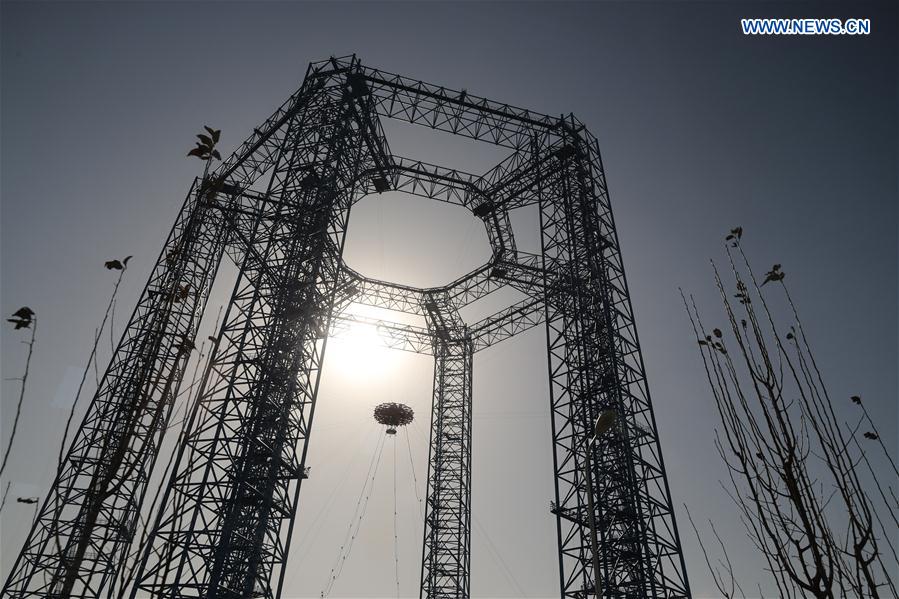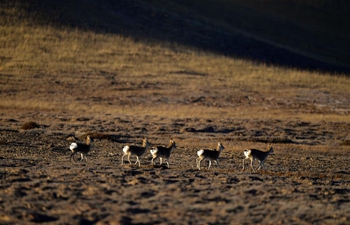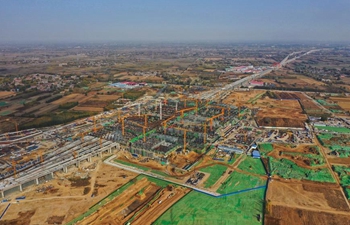
Photo taken on Nov. 14, 2019 shows the trial ground of an experiment for landing on Mars in Huailai County, north China's Hebei Province. China on Thursday unveiled an experiment simulating the process of a probe hovering, avoiding obstacles and descending to land on Mars. China plans to launch the Mars probe in 2020, aiming to complete orbiting, landing and roving in one mission, an unprecedented achievement, according to the China National Space Administration. How to safely land on Mars is one of the biggest challenges facing the mission. The experiment simulated the gravity of Mars, about one-third of the gravity on Earth, to test the design of the lander. (Xinhua/Jin Liwang)
BEIJING, Nov. 14 (Xinhua) -- China on Thursday unveiled an experiment simulating the process of a probe hovering, avoiding obstacles and descending to land on Mars.
The experiment was held on a trial ground, the largest in Asia for test landing on extraterrestrial bodies, in Huailai County, north China's Hebei Province.
China plans to launch the Mars probe in 2020, aiming to complete orbiting, landing and roving in one mission, an unprecedented achievement, according to the China National Space Administration (CNSA).
How to safely land on Mars is one of the biggest challenges facing the mission.
The experiment simulated the gravity of Mars, about one-third of the gravity on Earth, to test the design of the lander.
Ambassadors and diplomats from 19 countries including France, Italy and Brazil, as well as representatives from the European Union, the African Union and the Asia-Pacific Space Cooperation Organization were invited to visit the experiment.
Zhang Kejian, administrator of the CNSA, said since the official kick-off in 2016, China's Mars exploration program has progressed well. The hovering and obstacle avoidance test for the Mars lander is a crucial step of the project.
Zhang said China has been actively promoting international cooperation in space exploration. To date, China has signed over 140 space cooperation protocols with 45 countries and international organizations.
China has collaborated with France, Italy and Brazil in developing satellites for ocean, earth resources and astronomical observation and the study of seismic precursors, Zhang said.
China's Chang'e-4 mission embodies China's hope to combine wisdom in space exploration with four payloads developed by the Netherlands, Germany, Sweden and Saudi Arabia.
In April, the CNSA announced opportunities for cooperation with Chang'e-6 and asteroid exploration missions.
Earlier this month, China announced it would make the 16-meter optical data obtained by the Gaofen-1 and Gaofen-6 satellites available to global users.
"All these measures have enabled more countries, especially developing countries to enjoy the benefits brought by space technology and to advance social-economic development," Zhang said.















